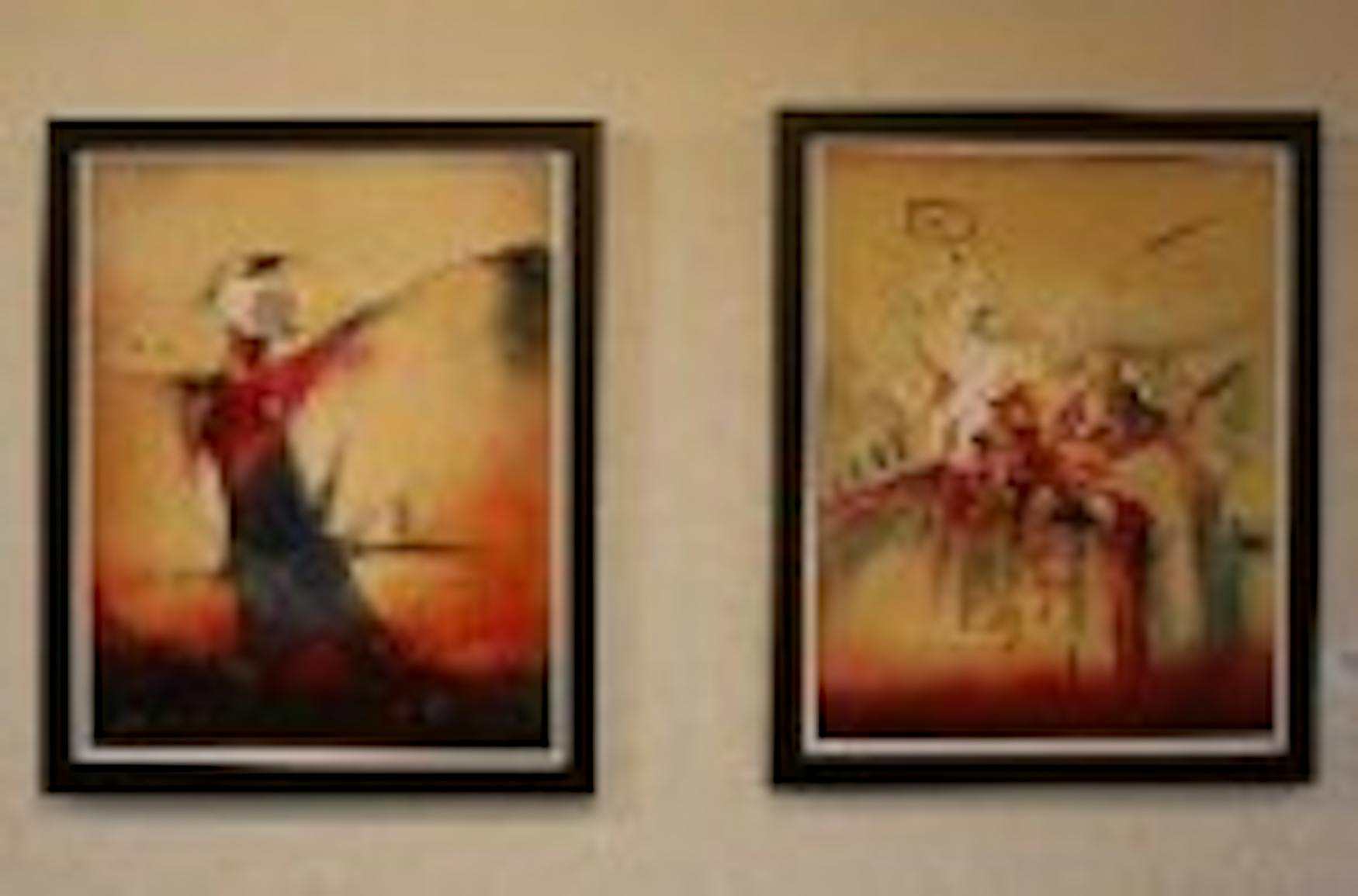A vivid array of Latino art
"The Art of Being Latino" demonstrates first and foremost that there is no single, monolithic "Latino Art." In the exhibit, currently showing in the Dreitzer Gallery in Spingold and sponsored by Ahora!, traditionally composed oil paintings hang side-by-side with nonrepresentational woodcuts, across the gallery from serene landscape paintings and an innovative video project. Ernesto Lopez '08, Ahora!'s Hispanic Heritage Month co-coordinator, says that "the theme for the month was breaking borders," in this case "cultural borders," and it seems clear this exhibit accomplished that goal by including works of a breathtaking variety, both thematically and technically.Here, several artists stand out by virtue of their unusual technical aspects: The exhibit features photographs of haystacks and outbuildings taken "by a 100-year-old camera," beach landscapes created using "photo on canvas" transfers, non-representational handmade color woodcut uniques on cotton paper and candid video of street scenes playing simultaneously on four miniature televisions.
The more traditional artwork also makes a splash, with the two most eye-catching pieces being a pair of large oil paintings by Francois Garcia. One, "La Justicia," features the traditional anthropomorphization of its titular concept: a blindfolded Anglo woman robed in flowing white garments and holding a sword and a balance, beautifully rendered in serene blues and grays. The other and perhaps the most striking of the pair, "Tablao," is a full-body portrait of a Latina dancer in the midst of a performance, accented with rich, warm colors and sweeping brushstrokes that accentuate the exhilarating impression of movement.
The video exhibit, "There Is No Time" by Adriana Rios, is also engrossing. Centering around "unplanned observations" of "people who sit or stand for long periods of time" in urban centers, its four videos capture simple images of people on the street, striking in their stillness amid the bustle of traffic and pedestrians.



Please note All comments are eligible for publication in The Justice.